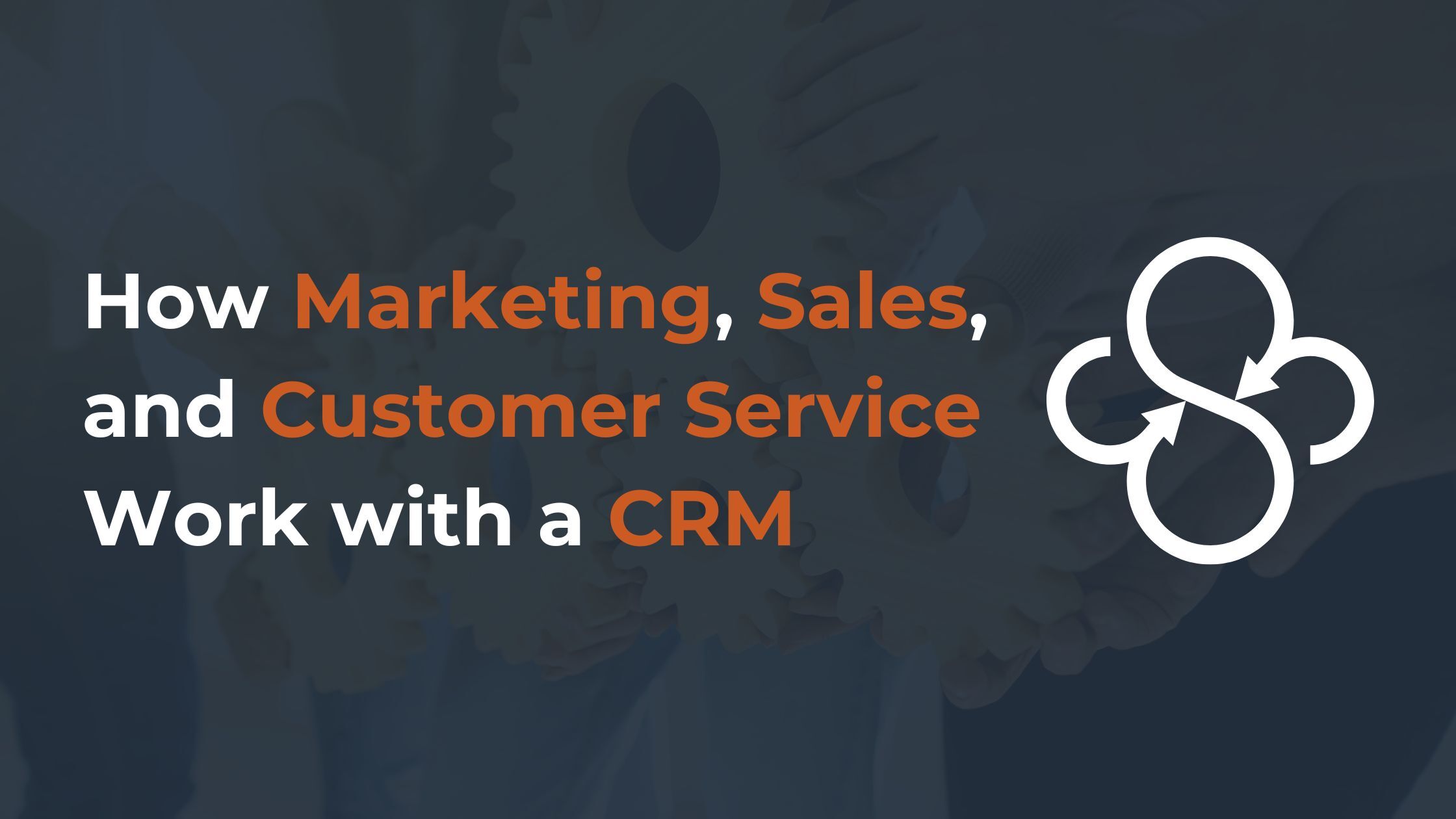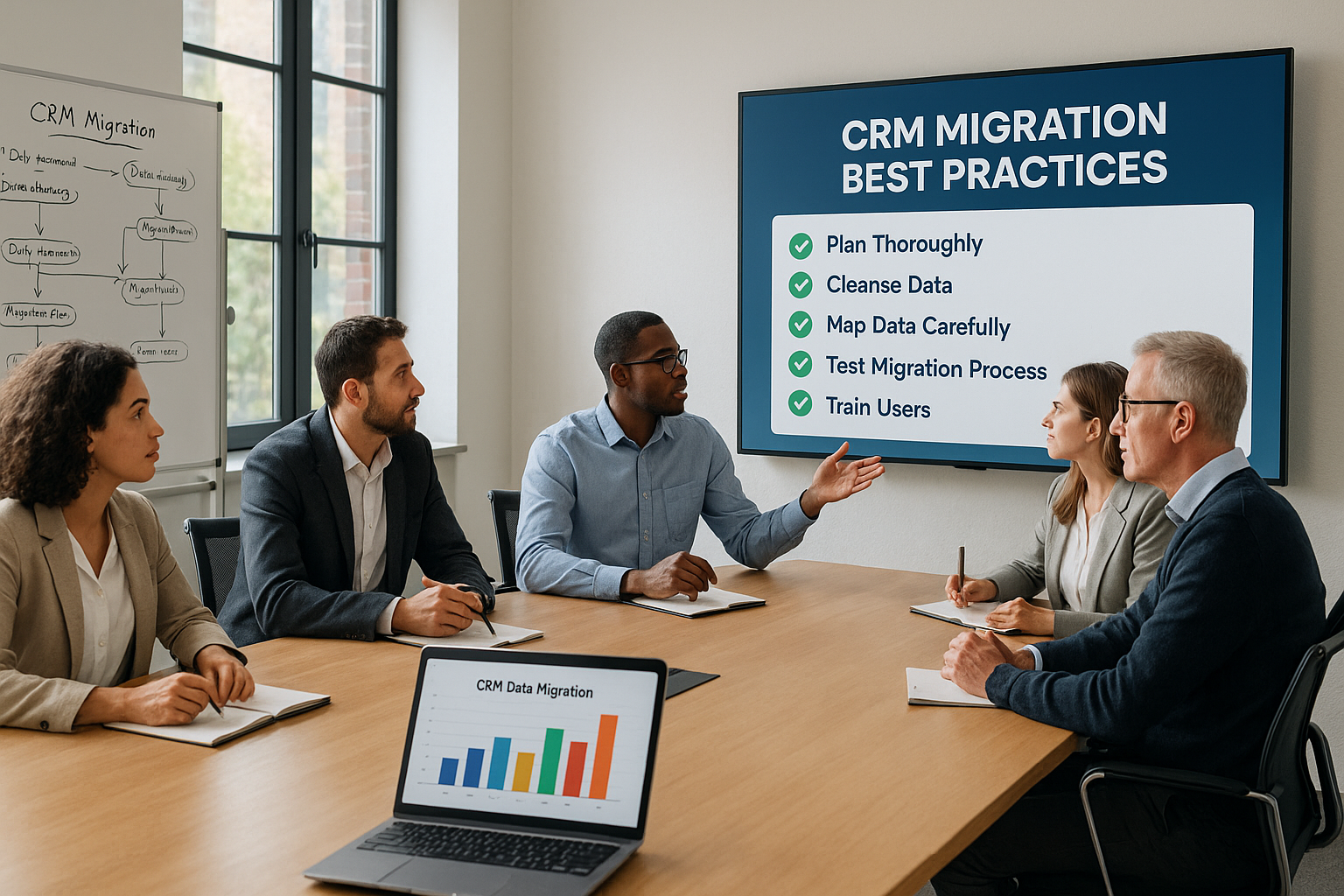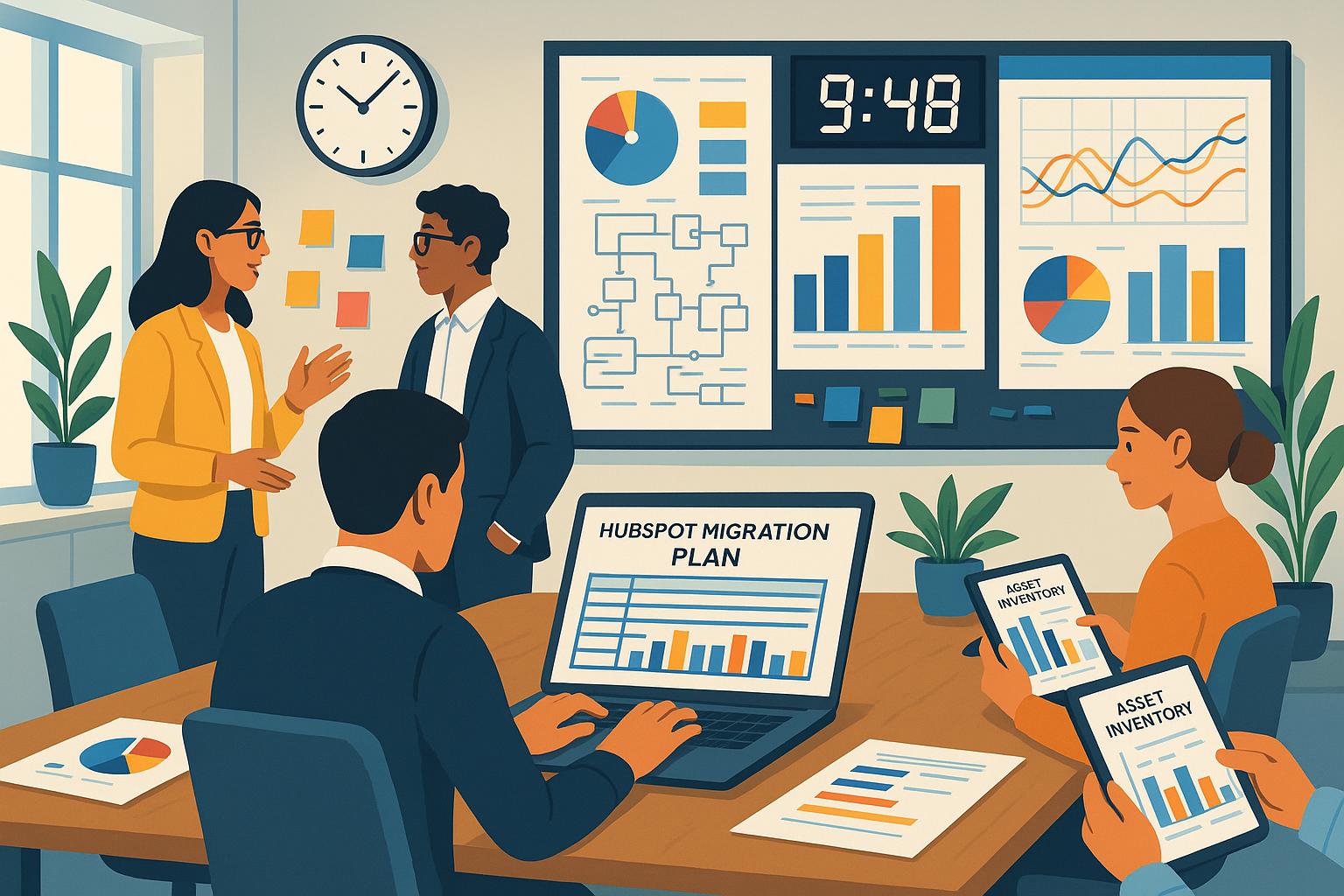When teams work in isolation, customer interactions feel disjointed. By uniting data and communications through a CRM, businesses ensure consistent, seamless experiences for customers.
How marketing, sales, and support teams use CRM:
- Marketing leverages CRM insights, such as email opens, webinar attendance, and site visits, to tailor outreach and convert curiosity into qualified leads.
- Sales relies on CRM dashboards and pipelines to stay organized, prioritize follow-ups, and anticipate deal stages, enabling better forecasting and coaching
- Customer service benefits from CRM access to customer history, reducing repetitive questions and enabling more personalized and proactive support.
Advantages of an integrated CRM system:
- Single source of truth: One central database keeps customer information accurate and consistent across departments.
- Smooth handoffs: Leads move fluidly from marketing to sales to support without loss of context.
- Aligned goals: Unified metrics help all teams work toward shared KPIs like revenue, satisfaction, and retention.
- Consistent customer experience: Personalized and coherent interactions build trust and loyalty.
Want to dive deeper? Keep reading the full blog post!
Table of Content
- Why CRM Collaboration Across Teams Is Critical for Business Growth
- What an Integrated CRM System Enables Across Departments
- How CRM Helps Align Goals Between Sales, Marketing, and Support
- What Does a Unified CRM Database Mean for Customer Experience
- Overcoming Collaboration Barriers with CRM Automation Tools
- FAQ
Why CRM Collaboration Across Teams Is Critical for Business Growth

Business growth doesn’t happen in silos. When marketing, sales, and customer service operate separately, customers feel it. Messages get duplicated, promises don’t match the experience, and opportunities slip through the cracks. A CRM collaboration connects these teams, turning scattered touchpoints into a connected journey. Think of it this way: marketing attracts interest, the sales team turns interest into revenue, and customer service turns customers into loyal advocates.
How Marketing Uses CRM to Target and Personalize Outreach
Marketers today can’t afford to blast one-size-fits-all marketing campaigns. People expect brands to “know them” from the first click. A CRM gives marketing the data they need to make that happen. Who opened last week’s email, what pages they browsed, what webinar they attended, and whether they’re a long-time newsletter subscriber or a first-time visitor.
With this insight, marketing teams can segment audiences in meaningful ways. For instance, an e-commerce brand could send special promotions to repeat customers while offering educational content to new prospects still exploring their options. Instead of guessing what might resonate, CRM-powered marketing makes outreach personal, timely, and relevant. That’s how you turn curiosity into qualified leads.
How CRM Helps Marketing and Sales Work Together
Ask any sales rep and they’ll tell you: not all leads are created equal. Marketing may generate hundreds of contacts, but if they’re not properly qualified, sales waste valuable time chasing the wrong people. However, a customer relationship management system can change the game.
With shared dashboards and lead-scoring systems, marketing can see exactly which leads convert into customers, and sales can give feedback on the quality of leads being passed along. For example, if marketing notices that leads from LinkedIn ads consistently close faster than those from trade shows, they can double down on what works. Sales, in turn, gets a richer context, knowing not just who the lead is but how they engaged with the brand before the first call.
As a result, you get more collaboration and a smoother journey from “interested” to “closed-won.”
How Sales Teams Use CRM to Manage Leads and Pipelines
A CRM is the daily playbook of salespeople. Instead of juggling notes, spreadsheets, or half-remembered conversations, sales reps can see every deal at a glance: where it is in the sales funnel, when the next follow-up is due, and what was said in the last call.
For example, if a rep notices a deal has been stuck at the “proposal sent” stage for too long, they can set a reminder to check in or try a different angle. Managers can also spot bottlenecks, forecast more accurately, and coach their teams with real data rather than gut feeling.
Customer Service Benefits from Shared CRM Access
The customer journey doesn’t end once the contract is signed. Customer service often makes or breaks long-term loyalty. With CRM access, support teams don’t start from zero every time a customer reaches out. They can see purchase history, past issues, and even ongoing sales conversations.
Imagine calling support about a product issue and the agent already knows what you bought, when you bought it, and what troubleshooting steps you’ve already tried. That saves you from repeating yourself and makes the interaction feel personal. On the business side, service reps can spot upsell opportunities (“I see you’ve been using X feature a lot, have you considered upgrading?”) or proactively flag issues to sales and marketing.
What an Integrated CRM System Enables Across Departments
An integrated CRM aligns marketing, sales, and customer service into a single, connected ecosystem. When departments operate within the same system, businesses gain a unified view of every customer interaction.
What does an integrated CRM facilitate? Here are some benefits:
- Single source of truth: Instead of fragmented databases across departments, an integrated CRM creates one central hub for all customer information. Every team can access accurate, up-to-date records, making collaboration easier and decisions more reliable.
- Seamless handoffs between teams: With shared visibility, handoffs between marketing, sales, and service become frictionless. Prospects and customers move smoothly through the funnel without losing context, creating a more professional brand experience.
- Smarter collaboration and goal alignment: An integrated CRM helps unify team objectives by connecting departmental KPIs to overall business growth. Marketing can see how marketing campaigns contribute to revenue, sales can track how leads progress, and service can demonstrate how customer satisfaction fuels retention and loyalty.
- Consistent and personalized customer experience: Prospects expect seamless interactions regardless of which department they’re engaging with. An integrated CRM ensures personalization and consistency at every stage, thereby strengthening trust and enhancing a competitive advantage.
At SyncMatters, we help businesses unlock the full power of CRM by ensuring their systems are not just implemented, but fully integrated across departments. Our platform connects over 55 CRMs with marketing tools, sales processes, and customer support platforms, ensuring data flows smoothly and teams work in harmony. Whether you need one-time migration or seamless integration, choose SyncMatters as your reliable partner!
How CRM Helps Align Goals Between Sales, Marketing, and Support

One of the biggest challenges businesses face isn’t a lack of tools or talent; it’s misalignment between teams. Marketing focuses on generating leads, sales on closing deals, and support on solving issues. While each department works hard, their efforts can pull in different directions if there’s no shared system to unify their goals. This is where a CRM becomes essential. CRMs help bring together different departments in a company, including sales, marketing, and support.
Shared Visibility Into the Customer Journey
CRM systems provide a complete view of every customer interaction, from first engagement to ongoing support. With this transparency, marketing knows which campaigns generate quality leads, sales understands customer history before starting conversations, and support sees the promises made during the sales process. This creates a continuous flow of information that prevents gaps and misunderstandings.
Unified Metrics and Reporting
Instead of working toward isolated KPIs, teams can measure success against shared outcomes like conversion rates, revenue growth, customer satisfaction, and retention. A CRM makes these metrics visible to everyone, encouraging accountability and collaboration rather than competition.
Clearer Handoffs and Reduced Friction
Disjointed processes often cause frustration for both employees and customers. With a CRM, leads are qualified and passed seamlessly from marketing to sales, while post-purchase data flows naturally into support. Each department has clarity about its role in the journey, minimizing duplication and finger-pointing.
Stronger Customer Relationships
Ultimately, aligning goals isn’t just about internal efficiency — it’s about creating a better experience for customers. When every department works from the same system, customers feel understood and valued at every stage, building loyalty and long-term revenue growth.
What Does a Unified CRM Database Mean for Customer Experience
A unified CRM database brings customer interactions, purchase history, preferences, and support records into one central hub. This eliminates the confusion of scattered customer data and ensures every team works with the same accurate and up-to-date details.
For customers, the impact is immediate. They experience consistency across every touchpoint, without having to repeat themselves or deal with conflicting information from different departments. Communication feels relevant and personal because it’s informed by their actual journey. Support becomes faster and more effective, since agents can see the full context behind every request. Over time, this level of coordination builds trust and strengthens loyalty. Customers feel understood, valued, and cared for.
Overcoming Collaboration Barriers with CRM Automation Tools
Even with the best intentions, collaboration between marketing, sales, and customer service often breaks down. Miscommunication, duplicated efforts, and delays can creep in when teams rely on manual processes or disconnected systems.
Automation eliminates the repetitive tasks that often slow teams down, such as manually logging interactions, routing leads, or updating records. Instead, customer data is captured and shared automatically, so each department has the context it needs without chasing updates. Marketing can automatically hand off qualified leads to sales, sales can trigger follow-up reminders without manual tracking, and support can be notified instantly when an issue arises with a high-value customer. By standardizing these processes, teams know what’s happening in real time and can trust the system to keep everyone on the same page.
In the bigger picture, automation doesn’t just improve efficiency; it creates the foundation for scalable CRM collaboration. As businesses grow, they can handle more leads, customers, and interactions without overwhelming their teams, because the CRM takes care of the operational heavy lifting.
FAQ
What are the main benefits of CRM collaboration?
CRM collaboration breaks down silos, giving teams a shared view of customer data. It improves communication, speeds up handoffs, ensures consistent experiences, and ultimately drives revenue growth and customer loyalty.
Can a CRM connect marketing automation with sales data?
Yes. How do sales and marketing teams use a CRM to work together? A CRM can link marketing automation with sales data, allowing teams to track how marketing campaigns generate leads, see which interactions lead to conversions, and optimize efforts based on real results.
What does an integrated CRM facilitate across teams?
An integrated CRM brings marketing, sales, and support onto the same page by giving everyone access to the same accurate information. It helps teams work toward shared goals, reduces confusion, and keeps workflows smooth.
How to align customer service with sales using CRM?
By sharing access to the same CRM, you can see how sales CRM improves team collaboration. Service teams can see customer history and sales agreements, while sales can track ongoing support interactions. This alignment helps anticipate customer needs, improve satisfaction, and identify upsell opportunities.




